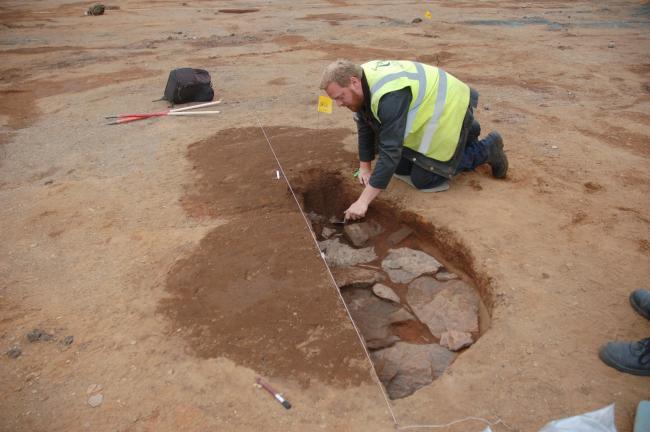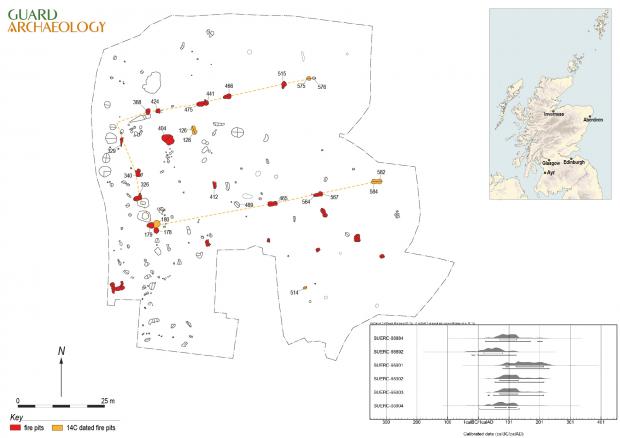Roman Army Camp Uncovered in Scotland

A marching camp used by the Legions as they made their way along the coast was found by a team carrying out work prior to the building of the new Ayr Academy.
It is thought to date back to the 1st century AD, when an army under Agricola, the Roman Governor of Britain, fought its way up to Aberdeenshire and defeated an army of Caledonians at the battle of Mons Grampius.
The only two known routes for the Roman invasion were previously thought to be further east; these same routes are followed by the current M74 and A68 roads.
But the new marching camp at Ayr reveals another route down the west coast towards the south-west tip of Scotland, from where Ireland is readily visible.
The discovery was made during archaeological excavations undertaken by GUARD Archaeology but only became apparent upon post-excavation analyses and radiocarbon dating.

Iraia Arabaolaza, who directed the excavation, said: ‘There was a ford across the river Ayr just below the Roman marching camp while ships may have been beached on the nearby shoreline.”The Ayr marching camp is 20 miles from the nearest Roman camp to the south at Girvan, which corresponds to a day’s march for a Roman soldier.”
There is a little more distance to other Roman camps to the north-east near Strathaven. Altogether this suggests that this site was chosen as a strategic location for the Roman conquest of Ayrshire.”
Roman marching camps have been described as the temporary bases of a tented army on campaign. While most Roman camps are usually recognised by the regular linear ditches which enclose them, landscaping or ploughing at the Ayr Academy site appears to have destroyed any such remains.
The camp at Ayr Academy, however, shares other similarities with Roman camps in Scotland, which have also revealed similar formations of fire-pits or camp-ovens. Ms Arabaolaza said: “The Roman features comprised 26 large, often double, fire-pits that were distributed evenly in two parallel rows 30m apart.
The arrangement and uniformity of these features implies an organised layout and the evidence suggests that they were all used for baking bread.”The location of the oven was recognised by the scorching of the subsoil base, stone slabs and burnt clay fragments, some with wood imprints and with dome moulding.
Ash pits were identified at the opposite end to the ovens within these figure-of-eight features, filled with burnt and charcoal-rich soil comprising the raked-out material from the clay-domed ovens.”It is also possible that the archaeological remains only represent a portion of the camp, which may have extended into the flat land to the north, where the modern racecourse is situated.
Archaeologists said that the Romans were not the first people to occupy the site. Traces of the local Iron Age population were recovered during the excavation, including a fragment of a shale bracelet, along with pits and post-holes that date to much earlier times.
Evidence of Bronze Age ritual activity from the late third and second millennium BC, a Neolithic settlement from the fourth millennium BC and a Mesolithic hunter/gatherer camp from the sixth millennium BC was also discovered, revealing the area to be one of the earliest and most complex prehistoric sites in this part of the west coast of Scotland.
This indicates the earliest occupation of the Ayr Academy site goes back to around 5200 BC, roughly twice as old as the Roman Marching Camp.
After defeating the Caledonians, Agricola returned south. Scotland would be invaded by the Romans again a century later when the Emperor Septimus Severus ventured north to put down raiding tribes.





